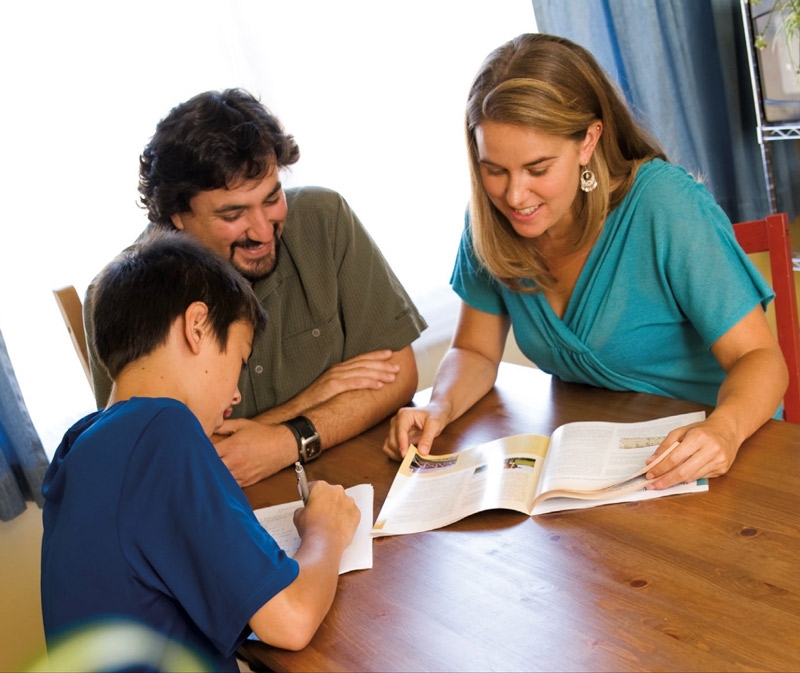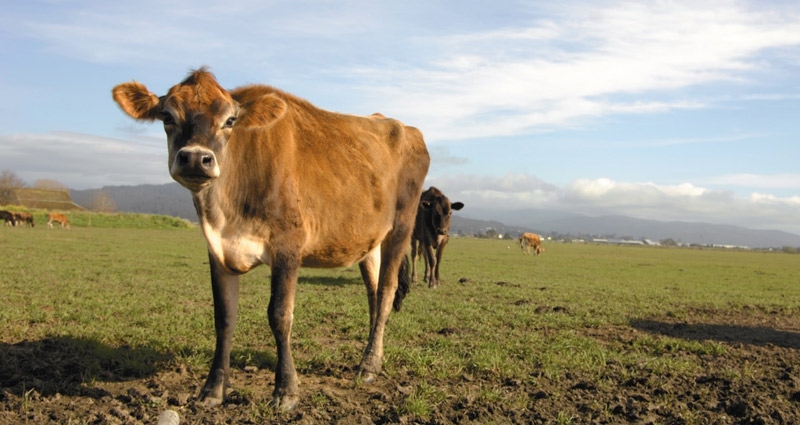Step 2: Create a Disaster Preparedness Plan
Will everyone in your household know what to do during the violent shaking of a strong earthquake or when a tsunami warning has been issued?
Do you know how to get in touch with each other afterwards?
Before the next earthquake or tsunami, talk to your family, housemates or co-workers and plan what each person will do before, during and after.
After the shaking stops or the waves recede, power, utilities, communication systems and roads may be out, fires and chemical spills may occur, or you may be separated from children, pets and other family members. By planning now, you will be ready. Planning for earthquakes and tsunamis will also prepare you for other more frequent emergencies such as storms, fires, and flooding.

Plan Now to be Safe During an Earthquake
- Practice DROP, COVER, and HOLD ON (see step 5, page 26).
- Identify safe spots in every room, such as under sturdy desks and tables.
- Learn how to protect yourself no matter where you are when an earthquake strikes.
Plan Now to Respond After an Earthquake or Tsunami
- Get a fire extinguisher for your home and learn how to use it properly.
- Teach everyone in your household to use emergency whistles and to knock three times repeatedly if trapped.
- Identify family members or neighbors with special needs such as medications, special diets and wheelchairs.
- Take a Red Cross First Aid and cardiopulmonary resuscitation (CPR) class or refresher course.
- Know the location of utility shut-offs and keep needed tools nearby. Only turn off the gas if you smell or hear leaking gas. Only the gas company should turn the gas back on.
- Install smoke alarms and check them monthly. Change batteries once a year or whenever you hear a ”chirping” sound.
- Work with your neighbors to identify people who have skills and resources useful in an emergency.
- Know the tsunami hazard zones in your community and how to get to safe areas.
- Recognize the natural warning signs of a tsunami—ground shaking, water receding unusually far, and/or a loud roar from the ocean—and make sure everyone in your family knows to immediately evacuate if they are in a hazard zone.
- Know how you may be notified if a tsunami warning is issued. Consider a NOAA Weather Radio with the Public Alert feature if you live or work in a tsunami hazard zone.
- If a tsunami warning is issued, get off the beach and tune in to your radio or television for further instructions on what to do.
- Is there a Community Emergency Response Team (CERT) in your area? If not, go to citizencorps.gov/cert and find out how to start one.
Plan Now to Communicate and Recover After an Earthquake or Tsunami
- Select a safe place outside of your home to meet your family or housemates after the shaking stops.
- Identify an out-of-the area contact person to call who can relay information to other friends and family.
- Provide all family members with a current list of important contact telephone numbers.
- Determine where you might stay if your home cannot be occupied after an earthquake or tsunami.
- Ask about your children’s school or day care emergency response plans. Keep emergency release information current.
- Talk to your insurance agent about your coverage for earthquake and tsunami losses.
- Make copies of important documents such as identification, deeds, insurance policies and financial records in a secure, waterproof container. Include a household inventory of your belongings.
Sign up for emergency alerts
All California counties have emergency notification systems. To find yours, search emergency notification along with your county name. Below you'll find the links for the north coast counties. Visit the sites to learn how to sign up for emegency alerts and messages where you live.
The state also has an earthquake alert system!
Sign up for the Earthquake Warning California alerts and download the app to your phone to get notifications right away.

Special considerations
Children
Earthquakes and tsunamis may be traumatic events for all of us. They are especially frightening for children who may not understand such events and feel anxious and confused. After an earthquake, a child fears reoccurrence and injuries, and being separated from other family members. Seeing a parent or other adult become frightened adds to a child’s anxiety. Repeated aftershocks can increase these fears. You can help to alleviate your child’s fears before the next earthquake.
- Talk with children about what might happen during an earthquake or tsunami. Let them ask questions.
Involve children in reducing hazards, putting together an earthquake kit and in developing an earthquake plan. Include emergency information in your child’s back pack. Practice family earthquake drills.
For more suggestions, visit Prepare Your Children for Earthquakes and Tsunamis
After the Earthquake
- Keep the family together.
- Reassure children.
- Encourage children to talk or draw pictures about their experience.
- Include children in earthquake cleanup and safety activities whenever possible and age appropriate.
- Take particular care at bedtime. Children may have difficulty sleeping, may wake up frequently and/or have nightmares for weeks or months afterwards. Allowing a child to share a room with another child or parents may alleviate these fears.
Fragile, Elderly and Disabled
- Persons with any special considerations need to take extra precautions.
- Realistically assess your own special needs and those of family members and write them down. Include medications and special equipment such as ventilators and oxygen tanks.
- Keep medications, duplicate prescriptions, glasses and any special equipment in a safe place where they can be easily reached.
- Keep a notebook, pencils, a whistle and flashlight in several locations if you have difficulty in communicating.
- Include supplies for seeing eye, hearing, or companion dogs.
During and After an Earthquake
- If you are in a wheelchair, lock the wheels of the chair once you are in a safe and protected position.
- If unable to move safely and quickly, stay where you are, even in bed, and cover your head and body with your arms, pillows and blankets.
- Use your whistle to call for help and signal others if you need it.
- To find out more about how children and adults react to emergencies and how you can help, contact your local mental health department.

Pets and Livestock
Don’t forget your pets in your earthquake and tsunami plan.
- Include extra pet food and medications in your disaster kits.
- Consider implanting your pet with an identification microchip so that if you and your pet are separated, you can be easily reunited.
- Many emergency shelters don’t allow pets. Prepare a list of family, friends and other locations that could shelter your pets in an emergency. Emergency preparedness is particularly important for livestock owners because of their food and shelter needs and difficulties in transporting large or numerous animals.
- Make sure every animal has durable and visible identification.
- Identify alternate water and power sources. A generator with a safely-stored supply of fuel may be essential if you have electrical equipment necessary to the well being of your animals.
- If you use heat lamps or other electrical machinery, make sure the wiring is safe and that any heat source is clear of flammable debris.
More tips for livestock owners:
- Humane Society: Disaster preparedness for farm animals
- American Vetrinary Medical Association: Large animals and livestock in disasters
- University of California Agriculture and Natural Resources: Livestock Disaster Planning